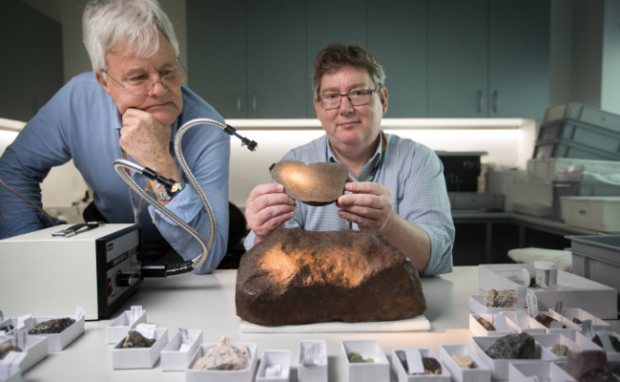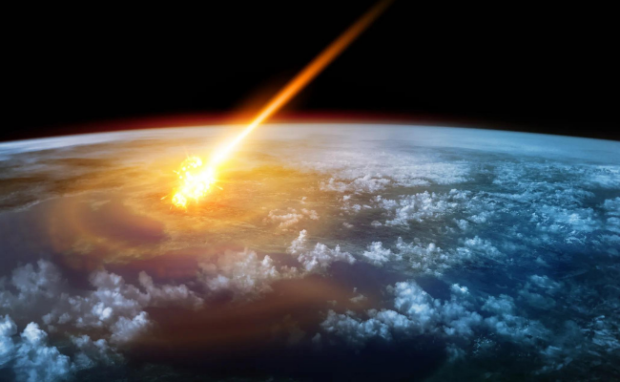Man searching for gold finds rare meteorite
An Australian man discovered a rare meteorite he thought was an ordinary rock. In 2015, David Hole was hunting for gold in Maryborough Regional Park when he found a stone harder than most. Years later, he submitted it to the Melbourne Museum, which determined the rock is a sample from the formation of our solar system.
Sometimes, luck leads to astonishing scientific discoveries, such as a man unintentionally finding a valuable sample for astronomers. What could scientists learn from the rare meteorite? Also, maybe you’d make a similar discovery in your daily routine!
This article will discuss how the gold seeker found the rare meteorite and cover what experts discovered about it. Later, I will share some of the latest asteroid discoveries.
How did Hole discover the meteorite?

The Sydney Morning Herald first reported on the space rock on July 17, 2019. The publication said David Hole found it while searching for gold in Maryborough Regional Park.
His metal detector pinged above a massive reddish rock. Hole took it home and tried to open it, believing there was a gold nugget inside. After all, why else would the detector spot it?
The gold seeker tried a rock saw, an angle grinder, and a drill. Those failed, so he drenched the rock in acid. Surprisingly, none left a dent! That is why he submitted it to the Melbourne Museum several years later.
Melbourne Museum geologist Dermot Henry accepted the rock and examined it. Fortunately, it turned out to be a rare meteorite, which is more valuable than gold!
Henry said it weighed a staggering 17 kg or 37.5 lbs. He used a diamond saw to remove a small slice, which revealed a high percentage of iron. That means it was an H5 ordinary chondrite.
Britannica says these are asteroids characterized by an abundance of chondrules, which are tiny crystallized droplets of metallic minerals throughout them. Also, Henry explained the space rock’s significance.
You may also like: Scientists put gold tattoos on cells
“Meteorites provide the cheapest form of space exploration. They transport us back in time, providing clues to the age, formation, and chemistry of our Solar System,” he said.
“Some provide a glimpse at the deep interior of our planet. In some meteorites, there is ‘stardust’ even older than our Solar System, which shows us how stars form and evolve to create elements of the periodic table.”
“Other rare meteorites contain organic molecules such as amino acids, the building blocks of life. This is only the 17th meteorite found in Victoria, whereas there’s been thousands of gold nuggets found,” he added.
Other recent asteroid discoveries

We might get fresh space rock samples from the upcoming Valentine’s Day asteroid, but scientists aren’t thrilled by its arrival. NASA’s Jet Propulsion Laboratory said it’s as large as an Olympic-sized swimming pool!
It has a 1 in 560 chance of crashing into Earth on the Day of Hearts. Fortunately, it only ranks 1 out of 10 on the Torino Impact Hazard Scale, which measures the potential risk of any outer space object crashing into our planet.
A 0 ranking means “likelihood of a collision is zero, or is so low as to be effectively zero.” The Valentine’s Day asteroid is a 1, so “the chance of collision is extremely unlikely with no cause for public attention or public concern.”
You may also like: Rare meteorite has ‘important clues’ on Earth’s origins
The National Aeronautics and Space Administration also adjusted the course of its WISE spacecraft to land on the small asteroid Dinkinesh. It was supposed to study the Trojan asteroids, but a recent discovery changed the plans.
“Dinkinesh is the smallest main belt asteroid to be studied up-close and could provide valuable information about this type of object,” said Amy Mainzer, one of the study’s co-authors.
“This population of main-belt asteroids overlaps in size with the potentially hazardous near-Earth object population. Studying Dinkinesh could provide insights as to how these small main-belt asteroids form and where near-Earth asteroids come from,” she added.
Conclusion
A man searching for gold found a significantly more valuable meteorite. “This is only the 17th meteorite found in Victoria, whereas there’s been thousands of gold nuggets found,” geologist Dermot Henry said.
“Looking at the chain of events, it’s quite, you might say, astronomical it being discovered at all,” he added. Perhaps you’d like to check your backyard for something as precious?
Maybe you’re sitting on a “gold mine” right now! Learn more about the rare space rock in the Proceedings of the Royal Society of Victoria (CSIRO). Check out more digital tips and trends at Inquirer Tech.